Leather shoes are more than just a fashion statement; they’re an investment. Whether you’re donning a pair of classy Oxfords, sleek loafers, or rugged boots, maintaining the condition of your leather footwear is essential to ensure longevity, style, and comfort. Proper care not only keeps your shoes looking sharp but also preserves the leather’s quality over time. In this comprehensive guide, we’ll walk you through everything you need to know about how to clean and maintain leather shoes effectively, from daily maintenance tips to in-depth cleaning techniques.
Why Leather Shoes Require Special Care
Leather is a natural material that requires regular attention to maintain its flexibility, appearance, and durability. Unlike synthetic materials, leather breathes, stretches, and evolves over time, creating a personalized fit. However, it’s also prone to drying out, cracking, and losing its luster if neglected. Understanding the nuances of leather care is key to ensuring your shoes remain in pristine condition.
Types of Leather Shoes and Their Unique Care Requirements
Before diving into the cleaning process, it’s important to recognize that different types of leather require slightly different care approaches. The most common types include:
- Full-grain leather: High-quality, durable, and retains the natural grain. It’s relatively stiff but softens over time.
- Top-grain leather: Slightly lower quality than full-grain but still strong and durable. It’s often sanded to remove imperfections.
- Patent leather: A shiny, coated leather that requires a special approach to avoid dulling the finish.
- Suede and nubuck: Soft, delicate leathers that need careful cleaning to avoid damaging their texture.
Step-by-Step Guide to Cleaning Leather Shoes
1. Gather Your Cleaning Supplies
Before you begin, it’s essential to have all the necessary cleaning materials. Here’s what you’ll need:
- A soft brush (horsehair is ideal)
- A microfiber cloth
- Leather cleaner or a mild soap
- Leather conditioner
- Leather polish (in a matching color)
- A shoe tree or crumpled newspaper
- A suede brush (for suede shoes)
- Waterproofing spray (optional)
Each of these tools plays a crucial role in maintaining your leather shoes. The brush helps remove dirt and debris, while the leather cleaner eliminates stains and grime. The conditioner keeps the leather soft and prevents cracking, while polish restores its natural shine. Shoe trees help maintain the shape of your shoes, especially after a cleaning session.
Remove Dirt and Debris
The first step in cleaning any pair of leather shoes is to remove surface-level dirt and debris. This is where the soft brush comes in handy. Gently brush the shoes to get rid of dust, mud, and loose particles. Pay special attention to areas like the soles and seams, where dirt can accumulate more easily.
Tip: If your shoes are muddy or wet, allow them to dry before brushing. Wet leather can be more susceptible to damage, so patience is key.
Clean the Leather
Once your shoes are free from surface dirt, it’s time to clean the leather itself. Use a leather cleaner or a mild soap solution. Apply a small amount of the cleaner to a damp microfiber cloth and gently rub it into the leather in circular motions. This helps lift any deep-seated dirt or grime.
For more stubborn stains, you may need to apply a bit more pressure or use a dedicated leather stain remover. However, be cautious about over-saturating the leather with moisture, as this can lead to drying or warping.
Tip: Test the cleaner on a small, inconspicuous area first to ensure it doesn’t discolor the leather.
Condition the Leather
Leather, like human skin, needs hydration to stay soft and supple. Over time, leather can dry out, leading to cracks and stiffness. Applying a leather conditioner restores essential oils to the material, keeping it flexible and durable.
To condition your shoes, use a clean microfiber cloth to apply a small amount of leather conditioner evenly across the surface. Rub it in using circular motions, allowing the conditioner to absorb into the leather. Afterward, let the shoes rest for about 10-15 minutes before buffing them with a dry cloth to remove any excess product.
Tip: For best results, condition your leather shoes every month, or more frequently if you wear them daily.
Polish the Shoes
Polishing not only adds a layer of shine to your shoes but also provides a protective coating that guards against moisture, scuffs, and scratches. Choose a leather polish that matches the color of your shoes (or opt for a neutral polish if you can’t find an exact match).
Apply a small amount of polish to a soft cloth or applicator brush and rub it into the leather in small circles. Once the entire shoe is covered, allow the polish to set for a few minutes before buffing it with a horsehair brush or clean cloth. This final step brings out the shine and helps smooth any uneven application.
Protect with Waterproofing Spray
If your leather shoes are often exposed to wet conditions, applying a waterproofing spray can provide extra protection. Be sure to choose a spray that is specifically designed for leather, as some products can clog the pores and affect the breathability of the material.
Lightly spray the shoes from a distance, ensuring even coverage. Allow the shoes to dry completely before wearing them. This protective barrier will help repel water and stains, prolonging the life of your shoes.
Special Care for Suede and Nubuck Leather Shoes
Suede and nubuck leather require a slightly different approach due to their delicate, velvety texture. Here’s how to properly clean and maintain them:
- Use a suede brush: Start by gently brushing the shoes with a suede brush to lift dirt and restore the nap (the raised fibers of the leather).
- Stain removal: For tough stains, use a suede eraser or a dedicated suede cleaner. Avoid using water, as this can cause permanent stains.
- Waterproofing: Apply a suede-specific waterproofing spray to protect against moisture and stains. Be sure to test the spray on a small area first.
How to Deal with Common Leather Shoe Problems
Scuff Marks
Scuff marks are one of the most common issues with leather shoes. Fortunately, they can be removed with a bit of elbow grease. Start by buffing the area with a soft cloth and applying a small amount of leather conditioner. If the scuff persists, you can use a leather repair cream in a matching color to blend the mark with the rest of the shoe.
Water Stains
If your leather shoes get wet, it’s important to act quickly to prevent water stains. Blot the excess moisture with a dry cloth and allow the shoes to air-dry naturally—never use direct heat, as this can cause the leather to crack. Once dry, apply a leather conditioner to restore moisture.
Salt Stains
During winter months, salt from sidewalks can wreak havoc on leather shoes. To remove salt stains, mix equal parts vinegar and water, and gently wipe the stained area with a cloth dipped in the solution. Follow up with a leather conditioner to keep the material from drying out.
How to Properly Store Leather Shoes
Proper storage is just as important as regular cleaning when it comes to maintaining your leather shoes. Here are some storage tips to keep your shoes in excellent condition:
- Use shoe trees: Inserting a shoe tree into your leather shoes helps them maintain their shape and prevents the leather from creasing.
- Avoid direct sunlight: Store your shoes in a cool, dry place away from direct sunlight, which can fade and dry out the leather.
- Store in dust bags: If possible, store your shoes in cloth dust bags to protect them from dust and scratches.
Taking care of your leather shoes doesn’t have to be a daunting task. With the right tools, a little bit of patience, and consistent care, you can keep your shoes looking sharp and lasting for years to come. Whether it’s cleaning, conditioning, or polishing, each step plays a critical role in preserving the beauty and functionality of your leather footwear.
Advanced Leather Shoe Care Techniques
For leather enthusiasts and those with high-quality, luxury leather shoes, basic cleaning and conditioning might not be enough to maintain the material’s beauty and durability over many years. There are advanced techniques and products that can further enhance the longevity and appearance of your leather footwear. Let’s explore some of these methods:
Deep Cleaning with Saddle Soap
Saddle soap is a specialized cleaner made specifically for deep cleaning leather. It’s often used to clean saddles, hence the name, but it’s just as effective on leather shoes. Saddle soap not only cleans but also conditions leather, making it ideal for shoes that have built-up dirt or require a more thorough cleaning.
How to use saddle soap:
- Dampen a cloth: Lightly wet a clean cloth with water, making sure it’s just damp, not soaking wet.
- Work up a lather: Rub the damp cloth into the saddle soap, working up a slight lather. Be careful not to apply too much soap.
- Clean the leather: Gently rub the lathered cloth over the surface of the shoe, working in small circular motions.
- Remove the soap: Wipe off any excess soap with a separate damp cloth.
- Condition the leather: After using saddle soap, the leather may feel slightly dry, so follow up with a leather conditioner to restore moisture.
Saddle soap is effective for deeper cleanings but should not be used too frequently, as it can strip some natural oils from the leather. Use it sparingly, perhaps only once every few months, especially if your shoes are heavily worn.
Resoling Leather Shoes
If you’ve invested in a high-quality pair of leather shoes, one of the biggest benefits is that they can often be resoled multiple times, extending their life for decades. Resoling is the process of replacing the worn-out sole of a shoe while preserving the upper portion (the leather).
Leather soles can wear out over time, especially if you walk long distances or frequently wear the shoes on rough surfaces. Signs that your shoes need resoling include:
- A noticeable thinning of the sole
- Cracks or splits in the sole
- Water easily seeping into the shoe from the bottom
Most cobblers or professional shoe repair services offer resoling, and they can even replace the heel if needed. Resoling is a sustainable option and a great way to preserve your favorite pair of shoes rather than buying new ones.
Leather Shoe Stretching
Sometimes, leather shoes can feel too tight, especially after long periods of not wearing them. Fortunately, leather is a flexible material and can be stretched to better fit your feet. Stretching can be done at home or professionally by a cobbler.
At-home shoe stretching methods:
- Shoe stretcher tool: This is a mechanical device that you insert into the shoe and then adjust to gradually stretch the leather. Leave it in for a few hours or overnight to achieve the desired fit.
- Wearing thick socks: Wear thick socks with your shoes and walk around the house for a few hours. The warmth and pressure from your feet can help soften and stretch the leather naturally.
- Freezing method: Put your shoes in a sealed plastic bag, then place them in the freezer overnight. The cold will cause the leather to contract slightly, and when they return to room temperature, the leather should feel more pliable and stretched.
Stretching leather shoes too much, however, can cause damage to the material, so it’s important to do this gradually and with caution.
Restoring Faded Leather
Over time, leather can lose its rich color due to exposure to sunlight, moisture, and general wear. If you notice your shoes are starting to look faded or dull, it’s possible to restore their original color using specialized leather dye or cream polish.
Steps to restore color:
- Clean the shoes: Make sure the shoes are clean and free of any dirt or polish.
- Apply leather dye: Using a soft cloth or sponge, apply leather dye evenly over the surface. Choose a dye that matches the original color of your shoes.
- Let the dye dry: Allow the dye to dry thoroughly (usually overnight). If necessary, apply a second coat to ensure an even finish.
- Polish and condition: Once the dye has dried, apply a conditioner to keep the leather soft, followed by a cream polish to add shine.
Be sure to test the dye on a small, hidden area first to ensure it matches the shoe’s original color.
Fixing Cracked Leather
Cracks in leather shoes are one of the most difficult problems to fix, but it’s not impossible. Minor cracks can be treated with leather fillers and conditioners, while deeper cracks may require more professional repair.
How to repair minor cracks:
- Clean and condition: Start by cleaning the shoes thoroughly and applying a generous amount of leather conditioner. This will help hydrate the leather and soften it.
- Use leather filler: Apply a leather filler (available at most shoe repair shops or online) to the cracked area. Smooth it out using a plastic spatula or your fingers.
- Let it dry: Allow the filler to dry completely before applying any polish or dye over the area.
For deep cracks or damage, it’s best to take your shoes to a professional cobbler who can repair the leather more effectively.
Common Mistakes to Avoid in Leather Shoe Care
While proper maintenance can keep your leather shoes in great shape for years, there are a few common mistakes that can harm the material:
Using Harsh Chemicals
Never use harsh chemicals like household cleaners, bleach, or vinegar directly on leather shoes. These can strip the leather of its natural oils, leading to dryness, cracking, and discoloration. Always opt for leather-specific cleaners or mild soap solutions.
Overusing Water
Water is the enemy of leather. While leather can handle light moisture (such as from a damp cloth), soaking the material can cause it to warp, stiffen, or stain. Always avoid saturating your leather shoes with water and never dry them near a direct heat source like a radiator or hairdryer, as this can cause the leather to crack.
Skipping Conditioning
Leather shoes need regular conditioning to stay supple and avoid cracking. Skipping this step, especially after cleaning, can leave your shoes vulnerable to wear and damage. Make sure to condition your leather shoes at least once a month, or more frequently if you wear them often.
Neglecting the Soles
Many people focus solely on the leather uppers of their shoes and forget about the soles. Leather soles need care too—regular cleaning, conditioning, and polishing will prevent them from wearing out prematurely. Consider adding sole protectors or rubber grips if you walk on rough surfaces frequently.
Not Using Shoe Trees
Failing to use shoe trees can lead to creases and misshapen leather shoes. Shoe trees help maintain the structure of your shoes when they’re not being worn, preventing creasing and allowing the leather to retain its original shape.
How Often Should You Clean and Maintain Leather Shoes?
The frequency with which you clean and maintain your leather shoes depends on how often you wear them and the conditions in which they are used. Here are some general guidelines:
- Daily wear: If you wear your leather shoes daily, clean them with a brush and condition them once a week. Polish and deep clean once a month.
- Occasional wear: For shoes worn occasionally, a light cleaning and conditioning once a month will suffice. Polish them as needed.
- Rain or snow exposure: If your leather shoes get wet, clean and condition them as soon as possible after they dry. Reapply waterproofing spray if needed.
Regular care will prevent the leather from deteriorating, ensuring your shoes remain comfortable and stylish for years.
Maintaining leather shoes properly is an investment in their longevity and appearance. From regular cleaning and conditioning to advanced techniques like resoling and repairing cracks, there are many ways to keep youShoe trees are indispensable when it comes to maintaining the shape of leather shoes. They’re typically made of wood (cedar is the most common and recommended material), which naturally absorbs moisture and odors from the leather while helping the shoe retain its form.r leather shoes looking and feeling their best. Avoiding common mistakes like overusing water or neglecting conditioning will further preserve the quality of your footwear. Whether you’re dealing with full-grain leather, suede, or patent leather, a consistent care routine will pay off in durability and timeless style.
Essential Leather Shoe Accessories for Maintenance
Having the right tools and accessories can make all the difference in maintaining leather shoes. These items not only help keep your shoes in pristine condition but also make the cleaning and maintenance process more efficient. Let’s dive into some of the must-have accessories for leather shoe care.
Shoe Trees
Benefits of using shoe trees:
- Prevents creasing: As leather shoes are worn and subjected to foot movement, they develop creases, especially across the vamp (the part over the top of the foot). Shoe trees help smooth out these creases and prevent permanent wrinkling.
- Absorbs moisture: After a day of wearing your shoes, moisture from sweat accumulates inside, which can weaken the leather over time. Cedar shoe trees absorb this moisture, allowing the leather to dry out in a controlled way, preventing odors and mold.
- Maintains shape: Leather can lose its shape if not properly stored. Shoe trees ensure your shoes maintain their form when not being worn, preventing misshapen areas that could lead to discomfort.
Insert shoe trees immediately after wearing your shoes, as this is when the leather is warm and more malleable. This will help the shoes cool down and dry in the correct shape.
Shoe Horn
A shoe horn is a small, inexpensive tool that many people overlook but is crucial for the longevity of your shoes. It helps you put on your shoes without crushing the heel, which can cause irreversible damage to the structure of the shoe.
Why use a shoe horn:
- Prevents heel damage: Repeatedly forcing your foot into a shoe without using a shoe horn can cause the heel area to bend and break down. This weakens the heel support and can lead to a misshaped shoe.
- Ensures a smooth fit: A shoe horn allows your foot to glide into the shoe smoothly without putting stress on the leather. This helps maintain the shoe’s overall structure and comfort over time.
Using a shoe horn regularly, especially for tighter shoes, will greatly increase their lifespan by protecting one of the most vulnerable parts of the shoe: the heel.
Shoe Brushes
A quality shoe brush is essential for removing dirt, dust, and excess polish from leather shoes. There are different types of brushes suited for various purposes, each designed to maintain the integrity of your shoes while providing a proper cleaning and polishing experience.
Types of shoe brushes:
- Horsehair brush: The most common brush for leather shoe care, a horsehair brush is soft enough to avoid scratching the leather yet effective enough to clean and buff shoes. It’s perfect for everyday cleaning and post-polishing buffing.
- Suede brush: For suede shoes, a special brush with stiff bristles is necessary. This brush helps raise the nap (the fuzzy surface of suede) and removes dirt without damaging the material.
- Edge dressing brush: This smaller brush is designed for polishing and maintaining the edges of your shoes, particularly along the soles and heels, where leather and other materials meet. It helps maintain a crisp, polished look.
Having a designated brush for each type of shoe ensures that you won’t transfer dirt or grime between different pairs and keeps the bristles effective.
Shoe Polish and Cream
Polishing leather shoes is crucial for maintaining their color, shine, and protection from external elements. Shoe polish comes in two main forms: wax polish and cream polish, and knowing when and how to use each is key.
Wax polish:
- Purpose: Wax polish adds a protective layer over the leather, enhancing its shine and providing a water-resistant barrier. It’s ideal for formal shoes where a high-gloss finish is desired.
- Application: Apply a thin layer of wax polish using a soft cloth, working it into the leather in small, circular motions. Buff the shoe with a horsehair brush to achieve a glossy finish.
Cream polish:
- Purpose: Cream polish is more nourishing for the leather as it contains more moisture than wax. It restores color and adds a subtle shine, making it ideal for more casual shoes or for shoes that need a color boost.
- Application: Apply cream polish similarly to wax polish, but don’t expect the same level of shine. Buff with a soft brush or cloth to bring out a slight gloss.
Using both cream and wax polish in your leather care routine—cream for nourishment and wax for shine—can offer the best of both worlds.
Leather Conditioner
Leather conditioner is arguably one of the most critical products for maintaining the health of your shoes. While polish provides protection and shine, conditioner moisturizes the leather, keeping it soft, flexible, and free of cracks. Without regular conditioning, leather shoes can dry out and become brittle, leading to cracks and deterioration over time.
Benefits of leather conditioner:
- Moisturizes and softens: Conditioner restores the natural oils in leather, keeping it supple and flexible.
- Prevents cracking: Dry leather is prone to cracking, which can irreparably damage your shoes. Conditioning prevents this by maintaining the leather’s natural elasticity.
- Enhances longevity: Proper conditioning ensures that leather shoes stay in good condition for years, significantly prolonging their lifespan.
To apply, rub the conditioner into the leather using a soft cloth, then let it sit for a few hours or overnight to allow the leather to absorb the moisture. Buff off any excess with a clean cloth.
Leather Cleaner
Leather cleaner is a specialized solution designed to remove dirt, grime, and other impurities from leather shoes without damaging the material. Unlike household cleaners, leather cleaners are pH-balanced and formulated to preserve the natural oils in the leather.
How to use leather cleaner:
- Spot cleaning: Apply a small amount of cleaner to a soft cloth or sponge, then gently rub the affected area in a circular motion.
- Full cleaning: For a deeper clean, apply the cleaner to the entire shoe. Be sure to follow up with a conditioner after cleaning, as the process may strip some of the leather’s natural oils.
Leather cleaners are particularly useful for removing stubborn stains or buildup that ordinary brushing won’t eliminate. Regular use can keep your shoes looking fresh without compromising the integrity of the leather.
Waterproofing Spray
For leather shoes that are frequently exposed to the elements, a waterproofing spray is a must. While leather is naturally water-resistant to some degree, prolonged exposure to moisture can damage the material and cause it to weaken.
When to apply waterproofing spray:
- After cleaning: Always apply waterproofing spray after cleaning and conditioning your shoes. This will help lock in moisture and prevent water from penetrating the leather.
- Before wearing in wet conditions: If you expect rain or snow, apply a fresh layer of waterproofing spray before wearing your shoes to ensure they are fully protected.
Waterproofing sprays are available for all types of leather, including full-grain leather, suede, and nubuck. Be sure to use the correct spray for your specific shoe type to avoid any damage or discoloration.
Leather Shoe Maintenance for Different Types of Leather
Not all leather is created equal, and the type of leather your shoes are made from will determine the specific care they need. Below, we’ll cover the most common types of leather used in shoes and how to care for each.
Full-Grain Leather
Full-grain leather is the highest quality and most durable leather available. It’s made from the outermost layer of the hide and retains the natural grain, making it the most resistant to wear and tear.
How to care for full-grain leather:
- Clean regularly: Brush off dirt and dust after each wear, and deep clean with leather cleaner every few weeks.
- Condition: Apply leather conditioner once a month to keep the material soft and supple.
- Polish: Use a cream polish to restore color and a wax polish to add shine as needed.
- Avoid water exposure: While full-grain leather is naturally water-resistant, it’s still best to avoid prolonged exposure to moisture. Use a waterproofing spray to protect your shoes in wet weather.
Top-Grain Leather
Top-grain leather is slightly lower in quality than full-grain but still durable and commonly used in mid-range leather shoes. It’s sanded down to remove imperfections, making it more uniform in appearance but slightly less durable.
How to care for top-grain leather:
- Regular cleaning: Dust off dirt after each wear, and use a leather cleaner for deeper cleaning when necessary.
- Condition occasionally: Condition every couple of months or whenever the leather starts to feel dry.
- Polish for protection: Use wax polish to add shine and protect the leather from moisture.
Suede Leather
Suede is made from the underside of the hide, giving it a soft, napped texture. While suede looks luxurious, it’s more delicate than other types of leather and requires special care to avoid staining and damage.
How to care for suede leather:
- Brush regularly: Use a suede brush to lift the nap and remove dirt after each wear.
- Avoid water: Suede is highly absorbent, so keep it away from moisture as much as possible. Use a specialized suede protector spray to help guard against water and stains.
- Remove stains carefully: For small stains, gently rub them out with a suede eraser. For larger stains, use a suede cleaner or take the shoes to a professional cleaner.
Advanced Leather Care Techniques
To truly elevate your leather shoe care routine, understanding advanced techniques can enhance the longevity and appearance of your footwear. These methods require a bit more attention and skill but can significantly improve the condition and aesthetics of your leather shoes. Let’s explore some of these advanced techniques.
Deep Conditioning
While regular conditioning helps maintain the leather’s suppleness, deep conditioning is an intensive process that rejuvenates old, dried-out leather. This is particularly useful for shoes that have been neglected or subjected to harsh conditions.
Steps for deep conditioning leather shoes:
- Clean thoroughly: Begin by cleaning the shoes with a leather cleaner to remove any dirt or grime. Make sure they are completely dry before proceeding.
- Choose a suitable conditioner: Select a high-quality leather conditioner specifically designed for deep hydration. Look for products that contain lanolin or beeswax, as these ingredients penetrate deeply into the leather.
- Apply generously: Use a soft cloth or sponge to apply the conditioner, ensuring even coverage. Pay special attention to creased areas, as these are often the most dried out.
- Let it absorb: Allow the conditioner to sit on the leather for several hours or overnight. This gives it time to penetrate and rejuvenate the leather fibers.
- Buff off excess: After the absorption period, buff off any excess conditioner with a clean cloth to restore a nice sheen.
Deep conditioning should be done every six months to a year, depending on how often the shoes are worn and the conditions they are exposed to.
Leather Cream and Dyes
Over time, even the best leather shoes can lose their color or develop scuffs and scratches. Leather creams and dyes can help restore the original color and cover imperfections.
Using leather cream:
- Select the right shade: Choose a leather cream that matches the color of your shoes. If in doubt, test the cream on a small, inconspicuous area first.
- Apply sparingly: Use a soft cloth to apply a thin layer of cream to the shoe, working it into the leather in circular motions.
- Buff to shine: After the cream has dried, buff the shoe with a horsehair brush to bring out the color and shine.
Using leather dye:
- Prepare the shoes: Clean the shoes thoroughly and ensure they are dry before applying dye.
- Choose the right dye: Leather dyes come in various forms, including liquid, cream, and spray. Select one that’s easy to apply and suitable for your shoe type.
- Test first: Always test the dye on a hidden part of the shoe to ensure you achieve the desired shade.
- Apply evenly: Using a sponge or brush, apply the dye in even strokes. Allow it to dry completely before adding additional coats if needed.
Dyeing leather shoes can breathe new life into them and can be an excellent option for restoring older footwear.
Professional Cleaning and Restoration
Sometimes, shoes may require more than just at-home care, especially if they’ve been subjected to extreme wear or damage. In such cases, consider professional cleaning and restoration services.
What to expect from professional services:
- Thorough cleaning: Professionals use specialized equipment and products to clean leather thoroughly without causing damage.
- Repair and restoration: Many shoe repair shops offer services such as stitching repairs, sole replacement, and restoration of color and shine.
- Conditioning: Professionals will often condition the leather as part of the cleaning process, ensuring the shoes are left in top condition.
Professional services can be a worthwhile investment for high-end or vintage leather shoes that you want to preserve for years to come.
Storing Leather Shoes Properly
The way you store your leather shoes can significantly affect their longevity and appearance. Proper storage techniques help maintain their shape, prevent damage, and keep them clean. Here are some tips for effective shoe storage:
Use Shoe Trees
As mentioned earlier, shoe trees are essential for maintaining the shape of your leather shoes. Insert them after each wear to help absorb moisture and retain the shoe’s form.
Store in a Cool, Dry Place
Avoid storing leather shoes in damp or humid environments, as this can lead to mold and mildew growth. Ideally, store your shoes in a cool, dry area away from direct sunlight, which can cause fading and drying out of the leather.
Use Dust Bags or Boxes
Storing leather shoes in dust bags or boxes can protect them from dust and scratches. Consider using breathable fabric bags for long-term storage, allowing the leather to breathe while keeping contaminants out.
Keep Away from Heat Sources
Avoid placing leather shoes near heaters, radiators, or any heat sources, as excessive heat can dry out the leather and cause it to crack.
Avoid Overcrowding
When storing shoes, avoid overcrowding them, as this can cause creasing and deformation. Ensure each pair has enough space to breathe and maintain its shape.
Common Leather Shoe Issues and How to Fix Them
Even with the best care, leather shoes can encounter problems over time. Knowing how to address common issues can extend their lifespan and keep them looking great. Below are some typical problems and their solutions:
Scuff Marks
Scuff marks are common on leather shoes, especially around the toe area. Here’s how to remove them:
- Using a damp cloth: For light scuffs, a damp cloth can often lift the marks. Rub gently until the scuff fades.
- Using a shoe polish: Apply a small amount of wax polish to the scuff, working it into the leather with a soft cloth. Buff afterward to restore shine.
Water Damage
Water damage can cause leather to warp and lose its shape. If your leather shoes get wet, follow these steps:
- Dry immediately: Blot excess water with a clean cloth and let the shoes air dry at room temperature. Avoid using heat sources to speed up drying, as this can cause cracking.
- Condition afterward: Once dry, apply a leather conditioner to restore moisture and flexibility.
Odors
Odors can accumulate inside leather shoes, especially with frequent wear. To eliminate odors:
- Use baking soda: Sprinkle baking soda inside the shoes and let it sit overnight. Shake out the excess in the morning.
- Use cedar shoe trees: Cedar naturally absorbs moisture and odors, making cedar shoe trees a great preventive measure.
Creasing
Creasing is a natural occurrence in leather shoes, especially in the vamp area. To minimize creasing:
- Use shoe trees: Inserting shoe trees immediately after wearing helps prevent creasing.
- Avoid tight-fitting shoes: Ensure your shoes fit properly to reduce stress on the leather.
Best Practices for Maintaining Leather Shoes
To keep your leather shoes in the best condition possible, implement these best practices into your regular care routine:
Clean After Every Wear
Make it a habit to brush off dirt and dust after each wear. This prevents buildup and keeps your shoes looking their best.
Rotate Your Shoes
Avoid wearing the same pair of shoes every day. Rotate your footwear to give each pair time to breathe and recover from moisture and wear.
Invest in Quality Products
Not all leather care products are created equal. Invest in high-quality cleaners, conditioners, and polishes to ensure your shoes receive the best treatment.
Be Mindful of Your Environment
Consider the conditions your shoes will be exposed to when choosing what to wear. For instance, avoid wearing leather shoes in heavy rain or snow without proper waterproofing treatment.
Attend to Repairs Promptly
If you notice any damage or wear, address it immediately. Whether it’s a loose sole, a broken lace, or a scratch, timely repairs can prevent further damage and keep your shoes looking new.
Properly cleaning and maintaining leather shoes is an investment in your footwear’s longevity and appearance. With the right tools, techniques, and products, you can ensure that your leather shoes remain a staple in your wardrobe for years to come.
Incorporating advanced care methods, understanding the intricacies of different leather types, and knowing how to address common issues will elevate your shoe care routine. By following these guidelines, you not only enhance the aesthetic appeal of your shoes but also ensure comfort and durability, making every step a confident one.
As we wrap up this comprehensive guide, remember that the care of leather shoes is a long-term commitment. However, the rewards—a pair of beautifully maintained shoes that turn heads—are well worth the effort. Whether you’re dressing for a formal occasion or heading out for a casual day, the right pair of leather shoes can complete your look and elevate your style.
Additional Resources for Leather Care Enthusiasts
For those looking to further expand their knowledge of leather care, consider exploring the following resources:
- Books on Leather Care: There are several excellent books that dive deeper into leather types, care techniques, and maintenance tips.
- Online Forums: Join online communities and forums dedicated to leather enthusiasts where you can share tips and ask questions.
- YouTube Tutorials: Many leather care professionals share their expertise on YouTube, providing visual demonstrations of cleaning and maintenance techniques.
By continually educating yourself and applying the knowledge gained, you can ensure that your leather shoes remain not just footwear, but a statement of style and durability for years to come.
Exploring Different Styles of Leather Shoes
Understanding the different styles of leather shoes and their specific care requirements can help you tailor your maintenance routine effectively. Here’s a closer look at various types of leather shoes, their characteristics, and how to care for them.
Oxfords
Characteristics:
Oxfords are classic dress shoes characterized by their closed lacing system. They typically feature a sleek and formal appearance, making them ideal for business and formal occasions.
Care Tips:
- Polishing: Regularly polish Oxfords to maintain their shine. Use a high-quality wax polish and buff to achieve a mirror-like finish.
- Avoid moisture: Since they are often made from fine leather, avoid exposing Oxfords to excessive moisture. If they do get wet, dry them properly and condition them afterward.
Brogues
Characteristics:
Brogues are distinguished by their decorative perforations and detailing. They can be Oxfords or Derbies, and they offer a versatile look that can be dressed up or down.
Care Tips:
- Brush regularly: Use a soft-bristle brush to keep the leather clean and free from dust.
- Conditioning: Brogues benefit from regular conditioning to keep the leather supple and prevent cracking, especially in the perforated areas.
Loafers
Characteristics:
Loafers are slip-on shoes that are often more casual than Oxfords or Brogues. They come in various materials, including leather, suede, and even synthetic options.
Care Tips:
- Cleaning: For leather loafers, clean with a damp cloth and use a mild leather cleaner if needed.
- Store properly: Keep loafers in a dust bag or box to prevent scuffing and maintain their shape.
Chelsea Boots
Characteristics:
Chelsea boots are ankle-high boots with elastic side panels. They are known for their sleek profile and can be worn for both formal and casual occasions.
Care Tips:
- Waterproofing: Apply a waterproof spray to protect them from water damage, especially if you wear them in wet conditions.
- Sole care: Pay attention to the soles, as they can wear out faster. Consider using a sole protector to prolong their life.
Chukka Boots
Characteristics:
Chukka boots are ankle-length boots typically made from leather or suede. They have a relaxed, casual style and are great for everyday wear.
Care Tips:
- Suede care: If your Chukkas are made of suede, use a suede brush to remove dirt and restore the nap. For leather Chukkas, follow the same cleaning and conditioning regimen as you would for dress shoes.
- Use a water repellent: Treat suede Chukkas with a water repellent to protect them from stains and water damage.
Sneakers
Characteristics:
Leather sneakers combine the comfort of athletic shoes with the elegance of leather. They are ideal for casual wear and can be paired with various outfits.
Care Tips:
- Regular cleaning: Clean leather sneakers with a damp cloth and mild soap. Use a soft brush for tough stains.
- Deodorizing: If sneakers develop an odor, sprinkle baking soda inside and let them sit overnight before shaking out the excess.
Choosing the Right Products for Leather Care
With a plethora of products available for leather care, choosing the right ones can be overwhelming. Here are some recommendations for essential leather care products you should consider adding to your arsenal:
Leather Cleaner
Invest in a high-quality leather cleaner specifically formulated for the type of leather you own. This ensures you’re not damaging the leather while effectively cleaning it. Avoid all-purpose cleaners, as they may contain harsh chemicals.
Leather Conditioner
A good leather conditioner is crucial for keeping the leather supple and preventing it from drying out and cracking. Look for conditioners with natural oils and waxes that penetrate deeply into the leather.
Shoe Polish
Quality shoe polish not only enhances the appearance of your shoes but also provides a protective layer. Opt for a polish that matches the color of your shoes for the best results. Consider both wax and cream polishes, as each offers different benefits.
Waterproofing Spray
If you live in a rainy area or plan to wear your leather shoes in wet conditions, invest in a waterproofing spray designed for leather. This will help protect your shoes from water damage and stains.
Brushes and Cloths
Having the right tools for cleaning and polishing is essential. Invest in a variety of brushes (soft-bristle for dusting, horsehair for polishing, and suede brushes for suede shoes) and high-quality microfiber cloths for applying cleaners and conditioners.
Shoe Trees
As mentioned earlier, shoe trees are an essential accessory for maintaining the shape of your leather shoes. Wooden shoe trees, particularly cedar, can help absorb moisture and odors while providing support.
Stain Remover
Keep a specialized leather stain remover on hand for emergencies. Ensure it’s suitable for the type of leather you own and always test it on a hidden area first.
The Benefits of Investing in Quality Leather Shoes
Investing in quality leather shoes comes with numerous benefits beyond aesthetics. Here are some reasons why quality leather footwear is a smart investment:
Longevity
High-quality leather shoes can last for many years with proper care. Unlike cheaper alternatives that may wear out quickly, a well-crafted pair of leather shoes can withstand daily wear and remain comfortable and stylish.
Comfort
Quality leather conforms to the shape of your foot over time, providing a custom fit. This can lead to improved comfort, especially if you’re on your feet for long periods.
Timeless Style
Leather shoes are a classic choice that never goes out of style. They can be dressed up for formal occasions or dressed down for casual outings, making them versatile additions to your wardrobe.
Sustainability
Investing in quality leather shoes can be more sustainable in the long run. Rather than frequently replacing cheaper pairs, a single pair of high-quality leather shoes can serve you well for years, reducing waste and consumption.
Final Thought
Properly cleaning and maintaining leather shoes is not just about aesthetics; it’s about preserving an investment in quality craftsmanship and comfort. By implementing a comprehensive care routine, understanding the specific needs of various leather styles, and using the right products, you can ensure that your leather shoes remain in excellent condition for years to come.
Whether you own a pair of classic Oxfords or stylish loafers, the knowledge and practices outlined in this guide will help you extend the life of your shoes, keeping them looking and feeling their best. As you embark on your leather shoe care journey, remember that every step counts—both in maintaining your footwear and in enjoying the benefits of stylish, comfortable shoes.
Should you have any further questions or need more tips on specific aspects of leather care, feel free to reach out! Your leather shoes deserve the best care, and I’m here to help you ensure they receive it.

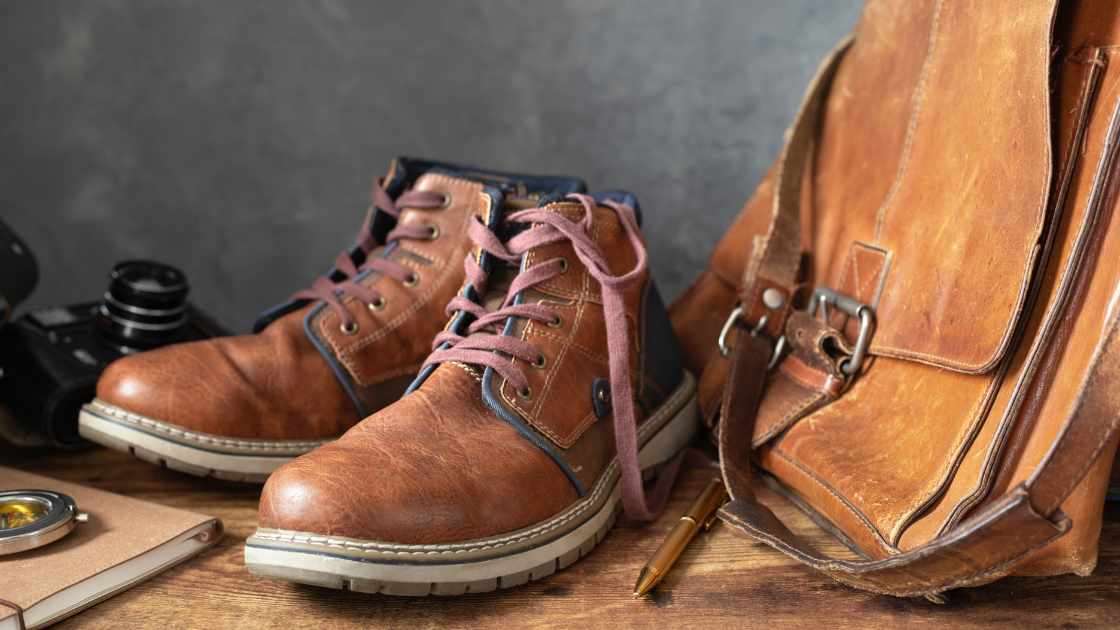






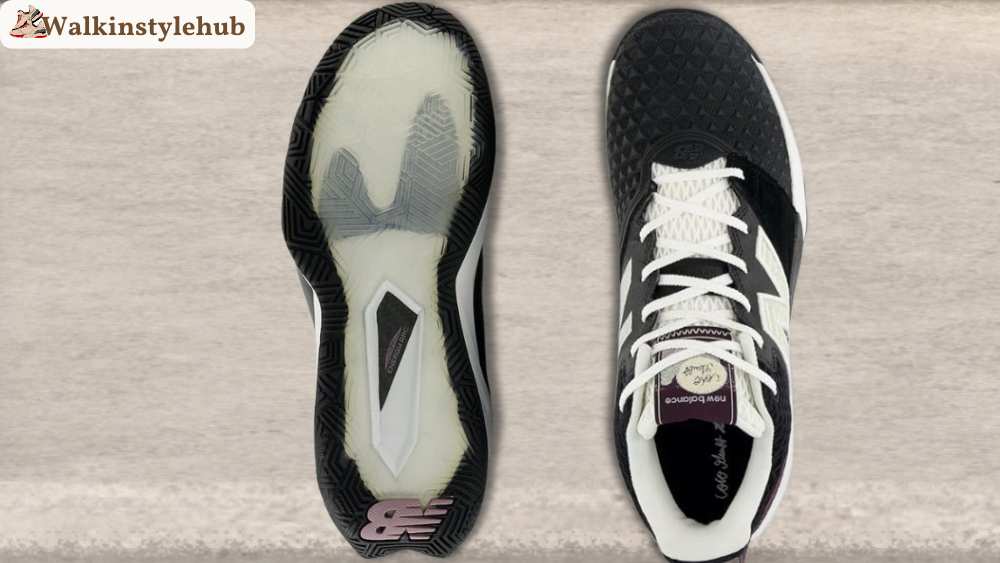
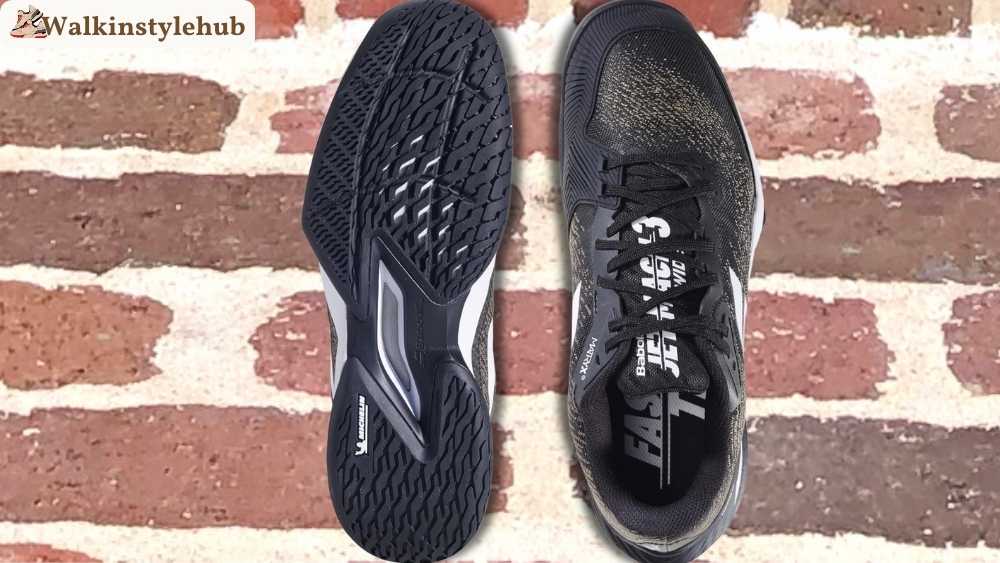
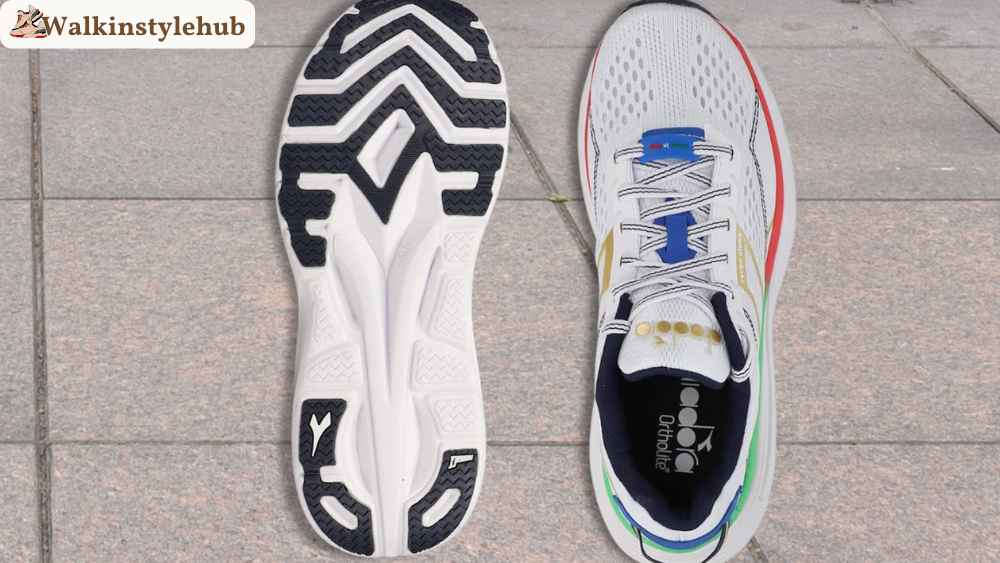
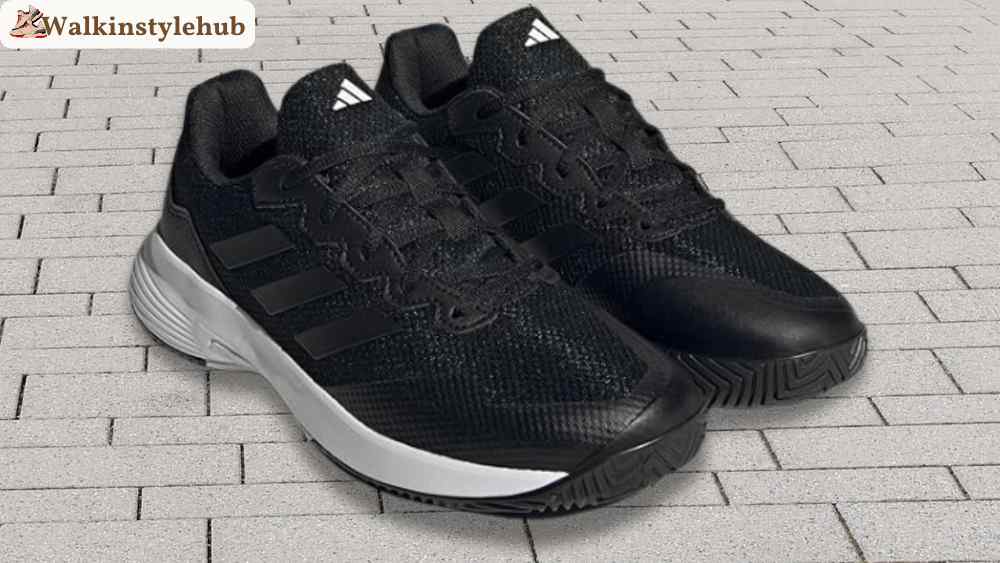
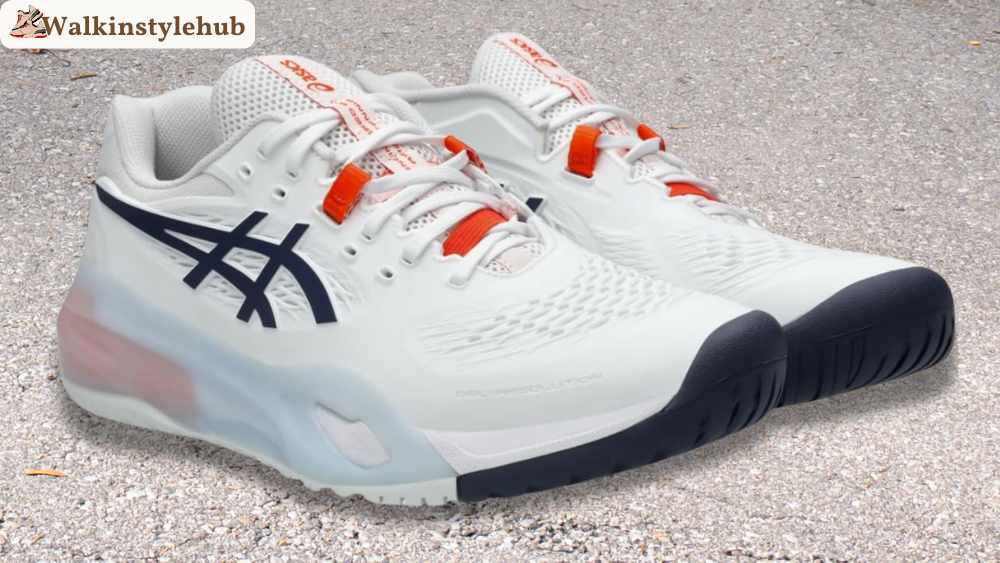
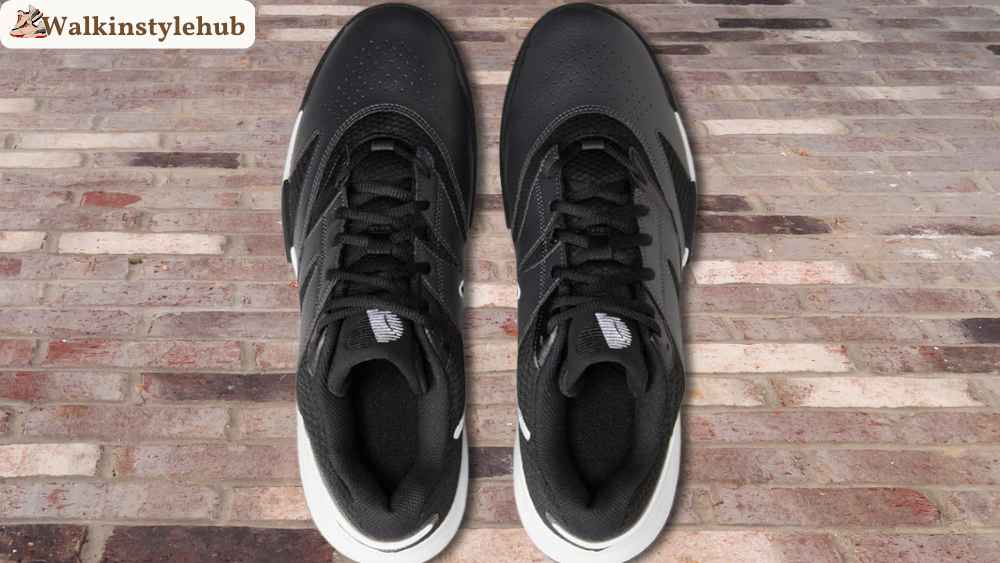
Leave a Reply